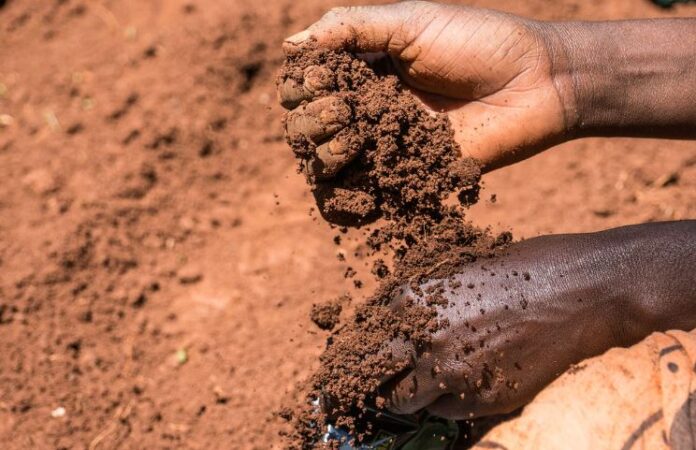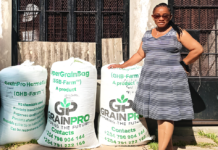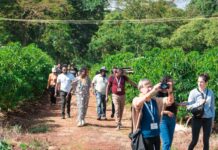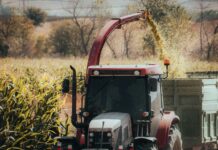For advanced food security and environmental sustainability in farming systems there is need for soil health and fertility – the crucial components of sustainable and successful farming practices.
While soil health refers to the overall condition and productivity of the soil, soil fertility is the ability of soil to provide essential nutrients to sustain plant growth and optimize crop yield, according to the Food and Agriculture Organization (FAO) of the United Nations.
The overall soil health and fertility can be determined by the physical and physiochemical properties of the soil. The physical properties include factors such as soil texture, water holding capacity, the depth of the soil profile, and drainage among others.
Physiochemical properties refer to properties such as the cation exchange capacity (CEC), anion exchange capacity (AEC), pH and the level of available plant nutrients.
It follows therefore that improving soil health and fertility is crucial for a number of reasons, and it should be a top priority for all farmers and gardeners.
It requires an integrated management approach that maximizes crop production while minimizing the mining of soil nutrient reserves and the degradation of the physical and chemical properties of soil that can lead to land degradation, including soil erosion.
Different approaches to efficiently manage soil health and fertility
Integrated soil health and fertility management is the best way to improve soil condition and productivity as it focuses on enhancing biodiversity and maximizing nutrient efficiency.
This approach combines the use of cover crops, grain legumes, crop rotation, soil analysis, Integrated Pest Management (IPM) system and application of chemical fertilizers among others. Generally, it involves the use of – organic or inorganic methods.
- Organic methods
Organic ways such as crop rotation, bush fallowing, no-till farming, growing cover crops, use of manures, and weed control among others. These are some of the organic measures that are used to preserve the fertility of the soil.
Soil coverage
Also known as mulching, this practice involves covering the soil with leaves or other organic materials. This helps retain moisture for longer periods, reduces erosion, and promotes the activity of soil organisms. As these organisms aerate the soil and enhance nutrient cycling, overall soil fertility improves.
Use of cover crops
Cover crops enhance soil aeration and, as they decompose, enrich the soil with essential nutrients. Legumes, for instance, contribute nitrogen, while grasses improve soil structure, promoting overall soil health.
Use of organic matter
Decomposed manure offers an immediate nutrient boost, enhancing soil fertility. However, when using homemade manure, it is crucial to take precautions to prevent the spread of disease-causing pathogens.
Tillage minimization
Excessive tillage exposes deeper soil layers, leading to moisture loss through evaporation and increasing the risk of soil erosion, which ultimately reduces fertility. Minimizing tillage helps retain organic matter, allowing it to decompose naturally and release essential nutrients into the soil.
Soil analysis
Conducting a soil analysis provides insight into the specific nutrients needed to maintain fertility, as soil composition varies across different regions. This information helps determine suitable crops for planting and the appropriate use of chemical treatments to manage pests and diseases. Maintaining nutrient-rich, well-balanced soil promotes healthy crop growth and supports beneficial microorganisms.
Crop rotation
Crop rotation is the systematic sequencing of different crops in the same field over multiple years. When implemented effectively, it offers both immediate and long-term benefits, including enhanced soil fertility through increased humus content, nutrient fixation, and mobilization. Additionally, it helps regulate weeds and harmful organisms while creating positive residual effects from previous crops.
Another key benefit of diverse crop rotations is the enhancement of biodiversity within agricultural landscapes. It also contributes to the shaping and enrichment of habitats and ecosystems. The organic approach has proven to be the most effective, benefiting both the soil and the farmer.
However, a significant challenge is the time required to see tangible results. Crop rotation typically takes at least three to four years for the soil to restore lost nutrients or effectively reduce pests and diseases.
- Inorganic methods
Sometimes farmers want to improve their soil nutrients yet they do not want to wait for long. Then what can they do? This is where the inorganic method comes in.
Inorganic methods involve the use of fertilizers and other synthetic products to quickly enhance soil productivity.
Smart use of fertilizers
Fertilizer application can harm the soil’s microorganisms that help aerate and enrich it with nutrients. For this reason, it’s important to apply only the necessary amount, which can be determined through a soil test.
A common misconception is that more fertilizer leads to healthier soil. In reality, excessive use of fertilizers and pesticides (inorganic methods) can degrade soil fertility over time.
- Integrated Pest Management (IPM)
Pesticides and herbicides can negatively impact soil health by killing beneficial microorganisms and disturbing the natural soil balance. Integrated Pest Management (IPM) combines the use of chemical pesticides with natural and cultural practices to reduce pest issues.
This approach may involve introducing natural predators, like birds and insects, to control pest populations or planting cover crops to attract these helpful organisms.
Long-term sustainability and productivity
Overall, enhancing soil health and fertility is currently essential for the long-term sustainability and productivity of the agricultural systems.
By implementing sustainable soil management practices, farmers can protect this vital resource for future generations.








